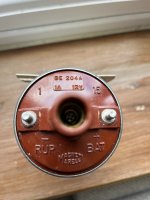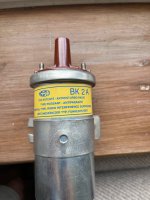Hello-
I am fast approaching the end of my tether- I hope that someone can help me! I have a 500L with a 650cc engine. Several years ago, it would run fine until it got hot when it would misfire for 20 seconds or so before stopping. Once it had cooled, it would restart. I tried changing coil, condenser, distributor cap, points, rotor arm and HT leads. This
seemed to fix things, but not for long. When I last tried to use it I replaced the condenser again, which seemed to cure it. However, I now have a very weak spark and can't start it at all. You may have by now realised that I am utterly clueless about car electrics! I have read somewhere that a Bosch "blue super coil" might help, perhaps together with a ballast resistor? If so, could someone explain to me (in layman's terms) how a ballast resistor is connected? My coil is giving me a reading of 9.43Ω across the secondary windings using the 20KΩ scale, and 6.3Ω across the primary with the 200Ω scale.
Any help would be gratefully received!
I am fast approaching the end of my tether- I hope that someone can help me! I have a 500L with a 650cc engine. Several years ago, it would run fine until it got hot when it would misfire for 20 seconds or so before stopping. Once it had cooled, it would restart. I tried changing coil, condenser, distributor cap, points, rotor arm and HT leads. This
seemed to fix things, but not for long. When I last tried to use it I replaced the condenser again, which seemed to cure it. However, I now have a very weak spark and can't start it at all. You may have by now realised that I am utterly clueless about car electrics! I have read somewhere that a Bosch "blue super coil" might help, perhaps together with a ballast resistor? If so, could someone explain to me (in layman's terms) how a ballast resistor is connected? My coil is giving me a reading of 9.43Ω across the secondary windings using the 20KΩ scale, and 6.3Ω across the primary with the 200Ω scale.
Any help would be gratefully received!




